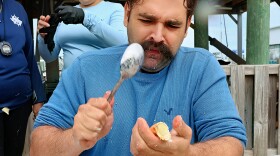For most of Florida, the dry season started in late October — by Christmas, most of the state is dealing with at least abnormally dry conditions that seem to be worsening as rain continues to be absent.
Precipitation deficits are ramping up across the state. Tallahassee is on track to experience the lowest precipitation recorded in December since 1946 when only 0.54 inches of rain were recorded. As of December 22, only 0.51 inches of rain had been recorded. The next chance for measurable rain is on Sunday, and it doesn't seem like it could be much.
Orlando is also experiencing a very dry December. The first measurable day was December 15; up to December 22, 0.44 inches of rain have been recorded in the area. On average, December registers about 2.48 inches of rain.
Tampa will continue to dry this week as we move into Christmas, which will likely last through the end of the month. Only 0.09 inches of rain have fallen so far this month, and December is, on average, the fifth driest month of the year, receiving 2.56 inches of rain.

The Southwest area of Florida is currently experiencing abnormally dry conditions. You might recall that Southwest Florida experienced very wet summer months, but the tables have quickly turned. Looking at the forecast, there is only a low chance of isolated showers continuing toward mid-week.
January's precipitation outlook, issued by NOAA's Climate Prediction Center, calls for a likely chance of below-average rain. So far this month, the Fort Myers area has received 0.15 inches of rain; on average, December gets 1.90 inches.

This week, South Florida is forecast to receive higher-than-average rain activity, with some days having a rain chance of around 40%. It will not be a washout, and we are certainly not forecasting flooding like the type that occurred in parts of Broward County last week, but this will be the scattered showers and perhaps some isolated storms, the type that would help the drought at least a bit.
Southeast Florida's drought has also expanded. December has also been drier than usual, only receiving 0.44 inches, while on average, 2.44 inches fell in December in the Miami area. The following 3 months, January through March, are, on average, the driest 3 months for Miami and most of the South Florida region.
Keep in mind that with the driest months ahead for most of Florida and the drought worsening, the chance of wildfires also increases. Wildfire season is year-round in Florida, peaking between May and June. The driest months build up the fuel, like dry vegetation, which is more prone to catching fire during the spring. We will keep a close eye on the drought and how it is impacting Florida. Please make sure to clear any dry vegetation in the coming weeks and months to avoid having it available in case of wildfires.
Copyright 2024 Storm Center






